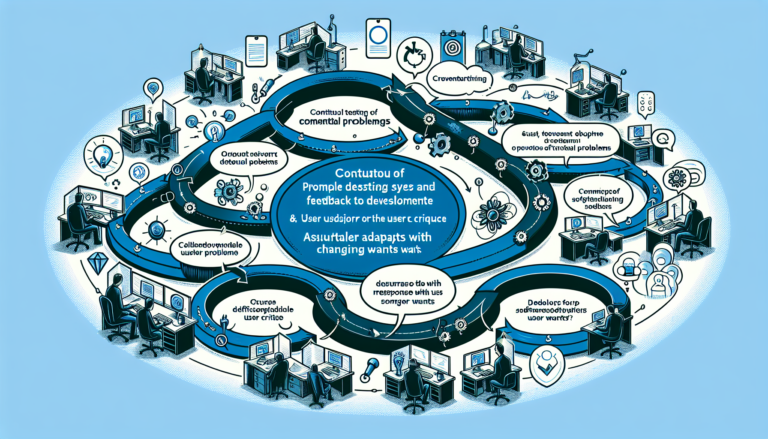Enhancing User Experience: Simplifying UI Design for Seamless Navigation
In the dynamic world of digital design, simplicity stands as the core principle for creating effective user interfaces (UI). Imagine embarking on a digital journey where pathways are intuitive and free from clutter. A user-friendly UI is akin to navigating a serene garden, where every path is clear, guiding you effortlessly to your desired destination. This is the vision behind successful UI design — crafting digital experiences that are both intuitive and seamless.
To enhance usability, start by eliminating digital clutter. Think of it as organizing a living room where every item has a purpose and place. In UI design, every component should justify its presence, guiding users smoothly from one step to the next. This principle is explored in depth in "Software Simplified: Navigating the Development Landscape," a valuable resource for understanding the balance between design and functionality. Visit Amazon to learn more about this insightful book.
Consistency in UI design is another treasure worth pursuing. Imagine reading a book with each chapter printed in a different font. Such inconsistencies distract from the story. Similarly, consistent design elements like fonts, color schemes, and button styles foster familiarity and comfort, aiding brand identity and a seamless user journey. Emphasizing a coherent design language can elevate user interfaces, a concept deeply discussed in "Mastering the UI/UX Narrative: Crafting Memorable Digital Experiences for Business Success," available here.
While simplicity and consistency lay the groundwork, accessibility is the key to inclusivity. It’s not merely about meeting requirements but showing empathy and creating equitable experiences for all users, regardless of their abilities. Accessibility involves considering color contrasts, ensuring keyboard navigability, and making content screen-reader friendly, adhering to the Web Content Accessibility Guidelines. Designing with accessibility in mind reflects a commitment to making digital experiences enjoyable for everyone.
Listening to user feedback is crucial for maintaining a dynamic and responsive UI. This ongoing conversation shapes design, keeping it fresh and relevant. Regular usability testing allows designers to observe real user interactions, gaining insights that drive meaningful improvements. This approach aligns with the principles discussed in "Mastering Software Success: The Art of Testing and User Feedback," which explores continuous improvement through feedback, found here.
Journey mapping offers a comprehensive view of the user’s experience within the software, allowing designers to streamline user flows and anticipate needs. This strategy enhances strategic planning, as detailed in "Unveiling the Path to Success: Mastering User Journey Mapping," accessible here.
Performance is the glue that holds all UI elements together. Users expect interfaces that are not only visually appealing but also quick and responsive. Slow load times lead to frustration and potential abandonment. Optimizing performance involves efficient coding practices, reducing image sizes, and regular testing for bottlenecks. This theme resonates with the empathetic design approach discussed in "Designing with Empathy: Crafting User Experiences That Resonate," found here.
Creating an engaging UI is an art where creativity and functionality meet. It’s about achieving a harmonious balance, where every design choice is intentional, enhancing the user’s journey. In today’s digital age, where first impressions are crucial, a well-crafted UI is vital. By focusing on simplicity, consistency, accessibility, feedback, and performance, you can craft digital experiences that are both functional and delightful, leaving users engaged and satisfied.
Let us keep in mind, as we strive to craft better interfaces, that simplicity is the elegant solution to complexity. Aim for user experiences that align naturally with human intuition, making them effortlessly enjoyable. This vision is the future of UI design—integrating technology seamlessly into our lives, ensuring each user’s journey is a pleasure, not a puzzle.






